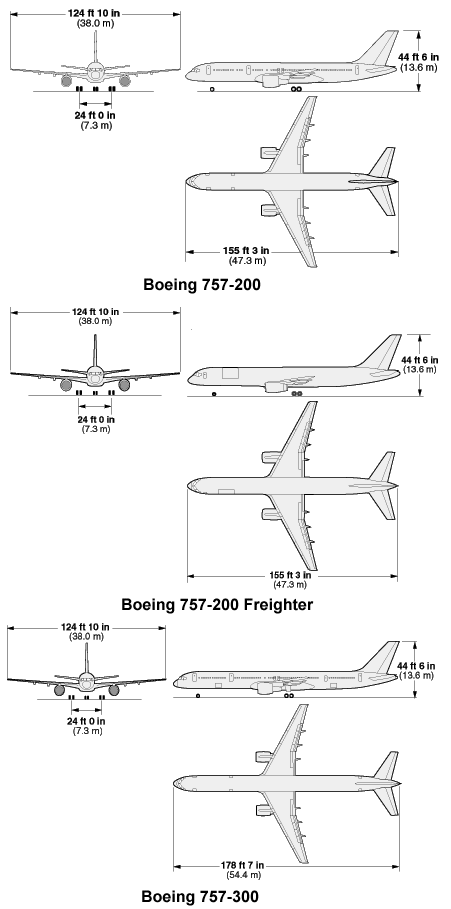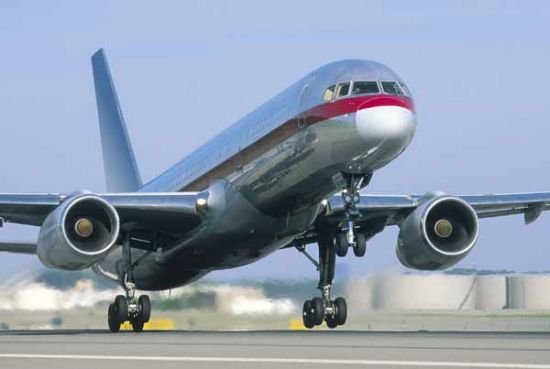See other 9/11 Articles
Title: 9/11 Pentagon Explosion:9:45 AM
Source:
[None]
URL Source: http://www.youtube.com/watch?v=KQ_g1buWhAA
Published: Apr 9, 2007
Author: youtube
Post Date: 2007-04-09 19:31:02 by honway
Ping List: *9-11* Subscribe to *9-11*
Keywords: None
Views: 15188
Comments: 114
http://www.youtube.com/watch?v=KQ_g1buWhAA
Post Comment Private Reply Ignore Thread
Top • Page Up • Full Thread • Page Down • Bottom/Latest
Begin Trace Mode for Comment # 25.
#5. To: honway (#0)
That video appears to show an explosion some time after the initial attack, whatever it was. There is a great video by pilots for truth which examines the flight data info, and suggests that the airplane did not hit the Pentagon. It suggests that a winged missile was dropped by the large aircraft, which never got below about 300-400 feet.
How big were those wings, Paul? A hundred feet from tip to tip? Because something knocked down lightpoles spaced that far apart at least. And something created a plane shaped hole in the Pentagon about 90 feet across. Those missile wings must have been made of unobtainium to do that. ROTFLOL!
Um... I don't remember seeing a plane shaped hole in the pentagon. I remember seeing a round hole, but not a plane shaped hole, because had there BEEN wings on the thing over 100 feet from tip to tip, There would have been much more lateral structural damage to the outer exterior of the building. Not to mention an absence of plane parts on the lawn at the time of the explosion, or how pristine the ground was all the way up to the Pentagon. A PLANE THAT SIZE, IN ORDER TO HIT THE PENTAGON AS LOW AS IT DID, WOULD HAVE DESTROYED A GOOD 300 yards of lawn on the way up. How do I know? A private firm asked me to make a scale model of the plane in question for their research, and with everything to scale, the engines would have drug the ground in order for the fuselage to hit as low as it did. Please, if you will, explain to me that little factoid.
#27. To: TommyTheMadArtist (#25)
Please, if you will, explain to me that little factoid. I am just going from memory here, but one analysis, measureing from the center of the pentagon's hole put the bottom of the engines nacellles (sp) eight feet into the ground. And I welcome BAC's input here, but sometimes I cannot follow, from the pictures, what he is suggesting. I just want to know what happened, and why it took 444 freeking days, under intense pressure from the victem's families. to cobble together a investigation into the roots of one the most damaging attacks on the USA. That happened to be packed with party hacks and insiders. Man it don't smell good. And why not release the many video tapes of the event??? That alone spells "culpibility". If what the governments position is grounded in the truth of the matter than the videos would have been proffered immediately.
Then you'd better take a look at post #42, Tommy. And there are plenty of more pictures where those came from. They show what is clearly a plane shaped hole in what was a reinforced outer wall. The hole is clearly on the order of 80 to 90 feet wide. And there is damage on both sides of the outer face beyond that ... out to where one would expect given the size of Flight 77. Now mind you, experts do not suggest that those portions of the wings and tail that contained no fuel penetrated the building. It is the mass of that fuel that allowed that to happen. Here's a few links you might want to visit if you really want to know the facts about the damage: http://911review.com/errors/pentagon/smallhole.html http://911review.com/articles/stjarna/eximpactdamage.html You've only looked at a photo taken from the direction that the plane came. Why, with a basic understanding of physics, would you expect debris to bounce back along a roughly 45 degree trajectory relative to the face of the structure in the direction the plane came from at hundreds of miles an hour? Basic physics tells you that any debris should continue in the direction the plane was moving after bouncing off the wall (like a pool ball striking a pool table wall at an angle that's not 90 degrees). And if you look down range of the impact site, you find plenty of debris in the photos. Here are a couple: and A PLANE THAT SIZE, IN ORDER TO HIT THE PENTAGON AS LOW AS IT DID, WOULD HAVE DESTROYED A GOOD 300 yards of lawn on the way up. No, if you compare the dimensions of the plane (and remember, the landing gear were up) to the size of the hole, you will see that the plane easily fits in that hole without the engine touching the ground. Now the engine did apparently hit the construction generator that was some distance in front of the building. You don't know what you are talking about, Tommy. Here is a drawing of a 757 with dimensions. The diameter of the fuselage is about 13 feet. The engines appear to extend 4 to 5 feet below the bottom edge of the fuselage. So the distance from the center of the fuselage (which is actually above the nose of the aircraft) to the bottom of the engines would be at most 12 feet. Just as a check on the above, here's a site that looks at the dimensions of the Pentagon hole and 757 in detail. http://home.planet.nl/~reijd050/JoeR/pentahole_dimensions_est.htm It states that the distance from the "Top of the fuselage to bottom engines. (landing gear was up)" is 17.7 feet According to that site, the width of the fuselage is 12.5 feet. Take 6.25 feet from 17.7 feet and you get about 11.5 feet from the center of the fuselage to the bottom of the engines. Now let's look at the hole in the structure. Turns out it is 20-25 feet from the top of the central hole to the ground. Notice that the top of the holes on each side of the main hole are about midway down ... say 10-13 feet. What does that tell you? Here's another drawing of a 757 from what I would assume a good source. Now if those drawings are to scale, then the tail sticks up about as much above the top of the fuselage as the top fuselage is above the ground. This photo of a 757 would seem to confirm that: So if the top of the tail is 44 feet above the ground, then the top of the fuselage, with the wheels on the ground can only be about 22 feet. Now, look at the drawing again. The top of the wing is about 40% of the way down from the top of the fuselage (again confirmed by the photo). Thus, the top of the wing must be about 12 to 13 above the ground, with the wheels extended. In other words, even with the wheels extended below the engines, the top of the wing would still be at about the top of the damage that REAL experts say is caused by the wings. And the wheels weren't down that day according to eyewitnesses. And from a link I provide earlier (http://911review.com/articles/stjarna/eximpactdamage.html ) is this, Tommy. ******** "The following graphic from the ASCE Pentagon Building Performance Report (2003: 20), shows schematically what the orientation of the plane to the building would have been like when the nose made impact (before the wings reached the facade)." ******** So you don't know what you are talking about. You really need to take a look at this: http://911research.wtc7.net/essays/pentagon/index.html "In this essay I asked what conclusions about the Pentagon attack were supported by physical evidence -- primarily post-crash photographs of the site. I found that, in every aspect I considered, this evidence comports with the crash of a Boeing 757."
Top • Page Up • Full Thread • Page Down • Bottom/Latest
#6. To: Paul Revere, ALL (#5)
It suggests that a winged missile was dropped by the large aircraft
#25. To: BeAChooser (#6)
Replies to Comment # 25. engines would have drug the ground in order for the fuselage to hit as low as it did.
#61. To: TommyTheMadArtist, Paul Revere, ALL (#25)
Um... I don't remember seeing a plane shaped hole in the pentagon. I remember seeing a round hole, but not a plane shaped hole, because had there BEEN wings on the thing over 100 feet from tip to tip, There would have been much more lateral structural damage to the outer exterior of the building.
Not to mention an absence of plane parts on the lawn at the time of the explosion, or how pristine the ground was all the way up to the Pentagon.


How do I know? A private firm asked me to make a scale model of the plane in question for their research, and with everything to scale, the engines would have drug the ground in order for the fuselage to hit as low as it did.





End Trace Mode for Comment # 25.